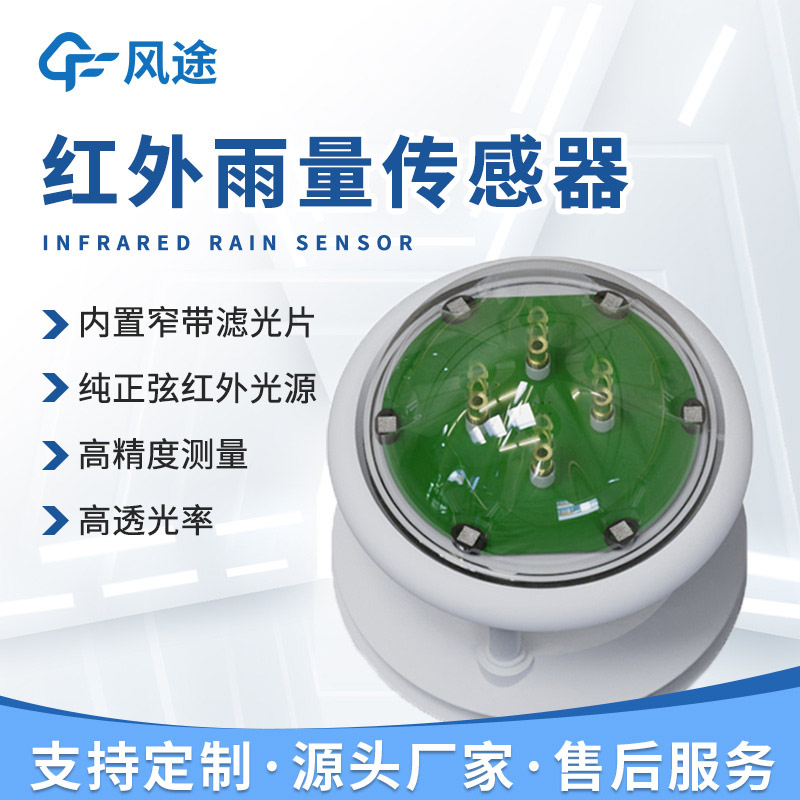Shandong Fengtu IOT Technology Co., Ltd
Sales Manager:Ms. Emily Wang
Cel,Whatsapp,Wechat:+86 15898932201
Email:info@fengtutec.com
Add:No. 155 Optoelectronic Industry Accelerator, Gaoxin District, Weifang, Shandong, China

Sales Manager:Ms. Emily Wang
Cel,Whatsapp,Wechat:+86 15898932201
Email:info@fengtutec.com
Add:No. 155 Optoelectronic Industry Accelerator, Gaoxin District, Weifang, Shandong, China
time:2025-05-14 08:59:10 source:Weather Station viewed:351 time
Rain is a natural necessity, but excessive rainfall can bring about serious disasters. Urban waterlogging can lead to traffic paralysis, and floods can submerge streets and houses, posing a threat to life safety. Heavy rainfall in mountainous areas is likely to trigger mountain torrents, landslides and debris flows, which can wash away roads and bridges, causing astonishing destructive power. Agricultural production is also severely affected, with crops being flooded and soil nutrients being lost, bringing huge losses to farmers. For this reason, accurate rainfall monitoring is of great importance.
The Stainless Steel Tipping Bucket Rain Gauge is one of the common Rain Sensors. It uses a funnel to collect rainwater. When the accumulated water reaches a certain level, the funnel tilts and flips to trigger an electronic signal, thereby recording precipitation. Its design is simple, making it easy to manufacture and maintain. It has excellent reliability and long-term stability, low cost and high measurement accuracy. It can accurately measure trace amounts of rainfall, has a rapid response, and is low in power consumption, making it suitable for use in the wild. However, in a strong wind environment, the rainwater is likely to be blown away or splashed, affecting the measurement accuracy. Regular cleaning and inspection are required to prevent blockages. When there is heavy rain, the high frequency of flipping may lead to data loss or delay. It is widely used in meteorological stations, hydrological monitoring stations, farmland, etc., providing data support for weather forecasting, hydrological research and agricultural irrigation management.
The Optical Rain Gauge measures rainfall by sensing the degree of infrared light blocked by raindrops. It has high measurement accuracy, is suitable for large-scale rainfall observation in cities, and has a high degree of automation. However, its maintenance and usage costs are high, and it is easily interfered with by external light sources, resulting in inaccurate measurements. It is suitable for urban rainfall observation scenarios.
The Radar Precipitation Sensor Rain Gauge Distrometer obtains rainfall information by emitting radar beams and receiving scattered signals. It has a large coverage area and can monitor rainfall over a large area. It is suitable for regional weather forecasting, has high accuracy, can accurately measure rainfall intensity and distribution, and supports refined weather forecasting. However, the equipment is complex, the cost is high, and professional maintenance is required. It is widely used in meteorological departments and the aviation industry, providing data support for weather forecasting, disaster warning systems and flight safety.
In conclusion, the Stainless Steel Tipping Bucket Rain Gauge is suitable for long-term monitoring in stable environments; the Optical Rain Gauge is suitable for scenarios with high real-time requirements; and the Radar Precipitation Sensor Rain Gauge Distrometer is used to meet the needs of large-scale and high-precision monitoring.

In traditional agriculture, farmers have long relied on the labor mode of "facing the loess and having their backs to the sky", understanding various situations in the fields through a hands-on approach. This way not only consumes a lot of physical strength and time but also has many limit...
The Atmospheric Visibility Sensor launched by Fengtu has extensive measurement capabilities. It can select different measurement distances of 10 kilometers, 50 kilometers or 80 kilometers according to user requirements, and also provides customized services.This instrument adopts infrared LED light...
Beidou Meteorological Station is an automated monitoring device that integrates multiple meteorological sensors and utilizes the BeiDou satellite short message function for data transmission. It can collect environmental data such as temperature, humidity, wind speed, wind direction, air pressure, and rainfall in real time in areas without terrestrial network coverage and autonomously transmit it to the monitoring center. It is suitable for disaster early warning and meteorological observation in remote areas....
In the fields of meteorological observation and environmental monitoring, visibility is a key indicator. Although traditional ground visibility monitoring stations can provide certain data, they have shortcomings such as limited monitoring range and difficulty in covering complex terrain. With the d...